
Afridi, who obtained her PhD in economics from the University of Michigan, Ann Arbor, and an MA in economics from the Delhi School of Economics, says that although the Mid Day Meal Programme is having a substantial effect, the quality leaves much to be desired.
NREGA has the potential to improve labour market opportunities for females in the rural areas, she tells Faisal Kidwai in an email interview.
Here are the excerpts:
In 2011, you and other economists wrote an open letter to Congress President Sonia Gandhi about the National Food Security Act and criticised the public distribution system. In your view, what are the main shortcomings with PDS and are you satisfied with the National Food Security Act?
The issue with the PDS system has always been the severe leakages because of which food grains don't reach the intended beneficiaries. As we say in the letter, research shows large illegal diversions of subsidised grains to the open market.
Click NEXT to read more...
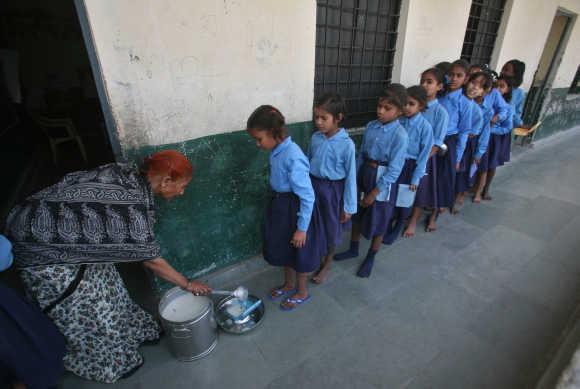
In addition, numerous case studies have shown that even when the poor possessed the ration cards, they face problems with respect to the low quality of grain, unpredictable availability, and irregular hours of operation of the PDS shops.
Many poor households do not use the PDS even when they have the necessary entitlement. We think that it is time the country started think of alternative ways of ensuring that the poor receive these benefits - through direct cash transfers or food coupons. Universalisation of this entitlement is a good idea but it should not be through the existing PDS system.
Click NEXT to read more...
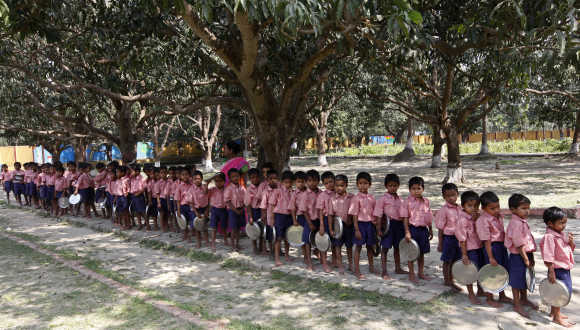
You have extensively studied India's school meal programme. Could you tell us some of the major points that stood out in your research?
Data from rural Madhya Pradesh shows that the daily nutrient intake of primary school children increased substantially by 49 per cent to 100 per cent of the school meals.
The findings suggest that for as low a cost as Rs 1 per child per school day (in 2003) the scheme reduced the daily protein deficiency of a primary school student by 100 per cent, the calorie deficiency by almost 30 per cent and the daily iron deficiency by nearly 10 per cent.
At least in the short-run, therefore, the programme had a substantial effect on reducing hunger at school and protein-energy malnutrition.
Click NEXT to read more...
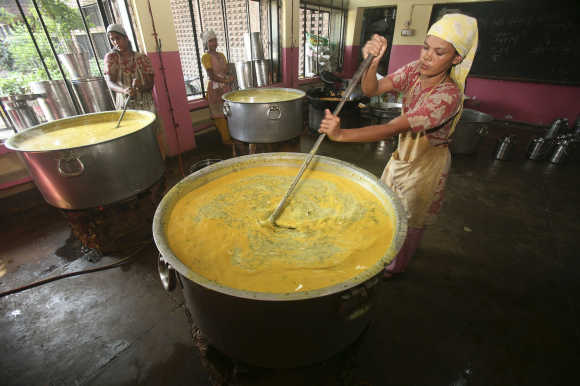
Research on the effects of transition from monthly distribution of free food grains to the daily provision of free cooked meals to school children in the same area shows that programme transition had a significant impact on improving the daily participation rates of children in lower grades.
The average monthly attendance rate of girls in grade one was more than 12 percentage points higher while there was a positive but insignificant effect on grade one boys' attendance rate. The impact on enrollment levels was insignificant.
In another study of MCD schools in Delhi we find that the average monthly attendance rates of students rose by two to four percentage points due to two changes in the design of school meal programmes - a move from providing ready to eat items to serving cooked meals and a subsequent change in the quality of the programme between 2002 and 2006.
Click NEXT to read more...
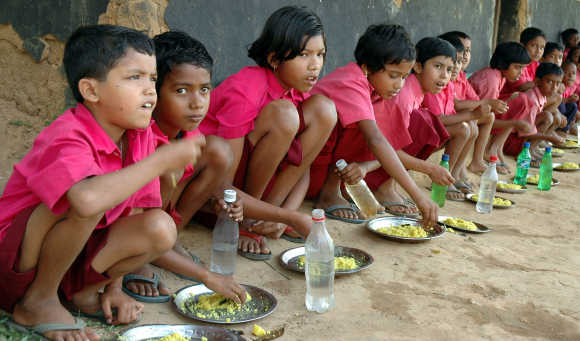
Our analysis suggests that the design and quality of school subsidy programmes can have significant effects on the magnitude of programme benefits.
What are the major drawbacks with the school meal programme and what should be done to improve it?
The quality of the programme leaves much to be desired. This includes regularity of the programme and variation in the menu so that children are attracted to school regularly. Infrastructure, specifically, in rural areas is severely lacking in spite of budgetary allocation to building kitchens, etc.
There should be an emphasis on a decentralised model of providing school meals - as in Delhi or Bangalore - rather than cooking on the school premises which can significantly reduce teaching time. The quantity of the meal should vary by the age group or class (within primary and secondary school).
Click NEXT to read more...

The absence of or small effects on attendance rates for higher classes suggests that the quantity of the meal is not large enough to form a substantial portion of the daily food intake of these children. These children are therefore less likely to be attracted by the programme.
Meals can be made more nutritious through fortification with essential vitamins and minerals, particularly iron. I don't think the programme is doing the best it can in addressing malnourishment issues.
How much does the government spend on this programme annually and how successful has it been in raising the enrollment and attendance rate?
The government in its Budget for 2012-13 (April-March) has allocated Rs 11,009 crore (Rs 110.09 billion) to the total Mid-Day Meal Programme this year. Expenditure was about Rs 9,000 crores (Rs 90 billion) in 2010-11.
Click NEXT to read more...
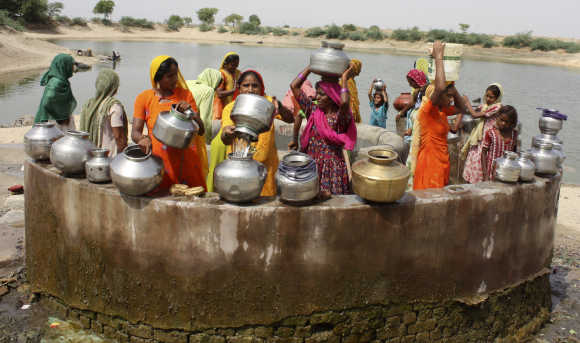
Another area that you have studied is National Rural Employment Guarantee Scheme. How successful the scheme has been, especially when it comes to empowering rural women through greater access to labour market opportunities?
We find that greater participation of mothers in the programme is associated with better educational outcomes of their children. Further, the estimated impact of mother's programme participation is over and above any effect induced by more income for the household through the programme.
Our study is based on Andhra Pradesh, where participation by women in the labour force is higher than the national average. In NREGA also, women in Andhra Pradesh are participating more than men. We cannot generalise our results to other parts of the country but our research suggests that NREGA has the potential to improve labour market opportunities for females in the rural areas because it provides easy access to work and gender parity in wages.
Whether it has fulfilled this potential or not can be determined only as more data become available.